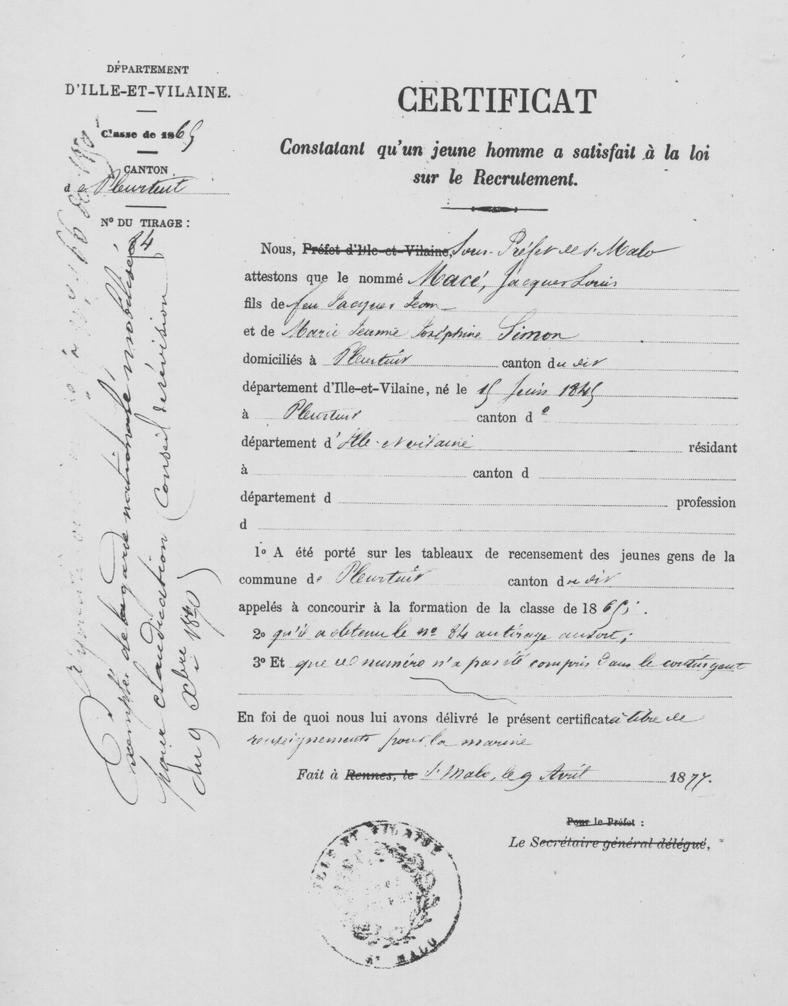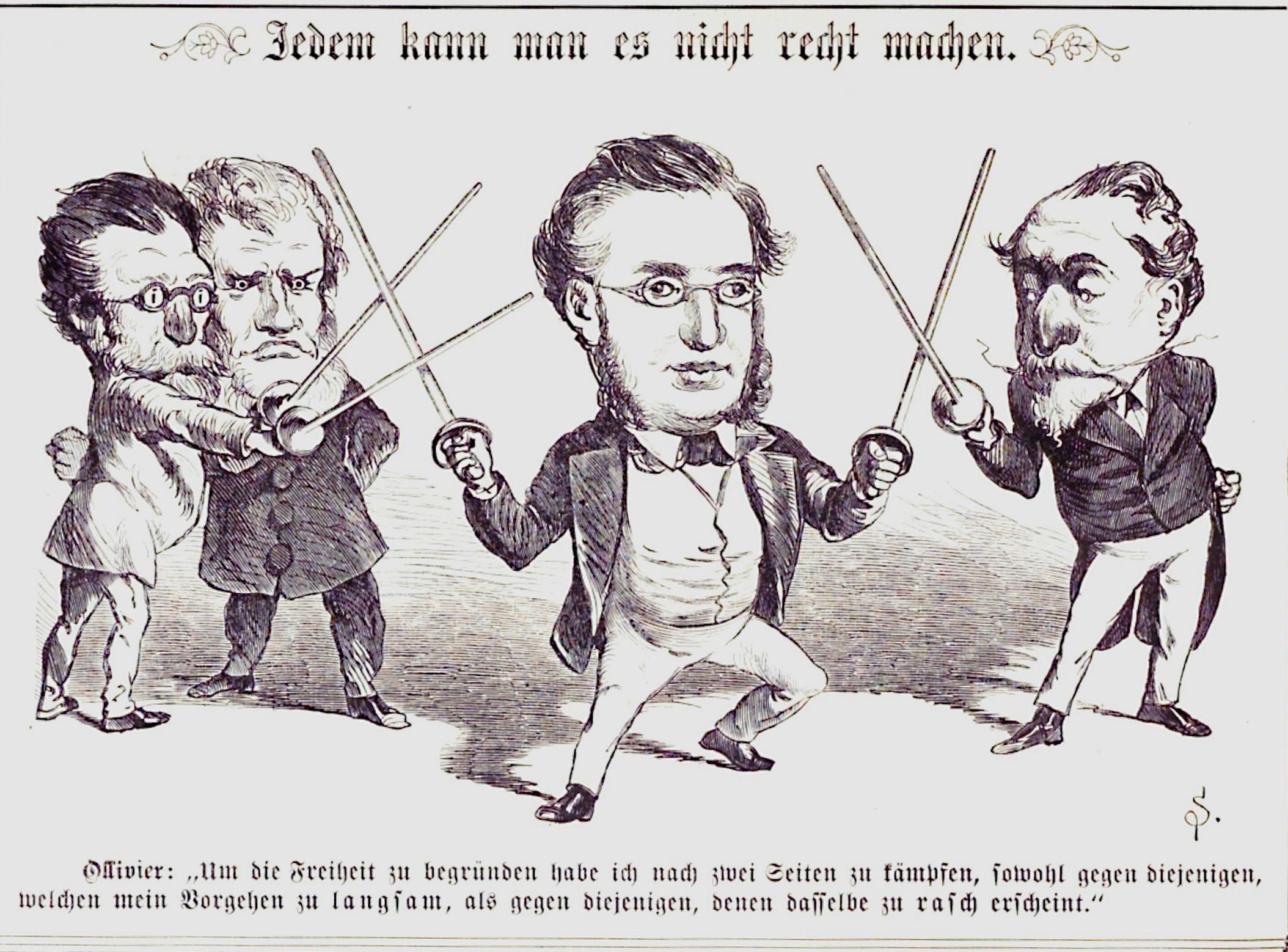France’s system of defence is put to the test in the Franco-Prussian War
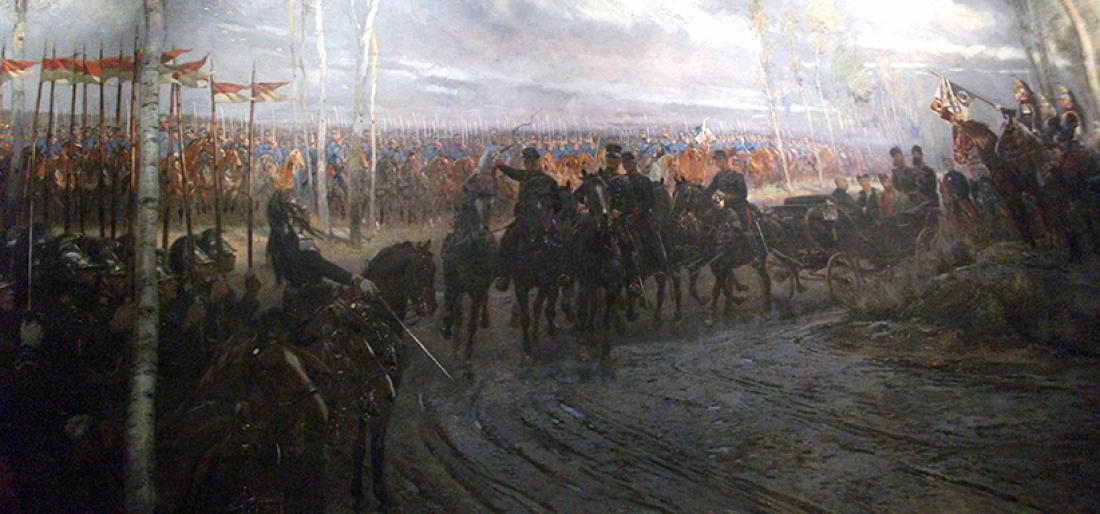
The term “test” is often used to refer to the French military defeats of the Franco-Prussian War (1870-71) and their serious consequences for the nation. Here, we will use it in the sense of shedding light on the shortcomings of the system of defence and the weakening ties between society and the duty of defence, in the first two thirds of the 19th century, up until the end of the Second Empire.
An inappropriate system of defence
- 1 - The dated legacy of the monarchies censitaires
Compared with the Prussian system of defence combining technology and numbers, the French system proved ill-suited to the type of war that was waged from 1870 onwards. Despite not insignificant efforts to restructure it after the disasters of the late Napoleonic era, France had an ageing defensive apparatus.
By the mid-19th century, the French army had a reduced format: 240 000 men under the Restoration, of which 150 000 infantry; 500 000 under the July Monarchy. This was the format used under the Consulate and in the early days of the Empire, and it was considered ideal because it comprised small numbers of seasoned troops. But the experienced veterans of the Great Army who remained after 1814-15 had to leave due to age and, as we shall see, the term “professional” could not be applied to those who replaced them.
Nevertheless, the French system was not closed to developments in the art of war. A strategic discussion got under way. Nor was the land army unreceptive to innovation; it had a number of experimental units. Under the monarchies censitaires (the constitutional monarchies of the Bourbon Restoration, 1815-30, and the July Monarchy, 1830-48) and the Second Republic (1848-51), the land army was far from incompetent and its reputation for inertia owes much to writers like Stendhal and Vigny. Incidentally, Vigny’s Military servitude and grandeur was so titled because the author deplored the fact that the army was confined to a policing role. The negative image we have of the army would be better directed at the Second Empire, although we need to be careful not to fall into a “black legend”. It is true that, from 1815, there was a pause in the process towards all-out warfare, up until the American Civil War. France itself entered a period of peace up until the Crimean War, interrupted only by the brief expeditions to Spain in 1823 and Greece in 1827 under the Restoration, and by foreign policing operations in Ancona and Antwerp in 1832, under the July Monarchy, and in Rome in 1849, under the Second Republic. Only the conquest of Algeria represented a large-scale intervention with a significant deployment of troops, albeit in an asymmetrical conflict. The Crimean War and the Italian War of Independence were less limited. Yet despite being victorious, the army was deemed mediocre by Napoleon III, a former artillery officer with a good knowledge of military matters.
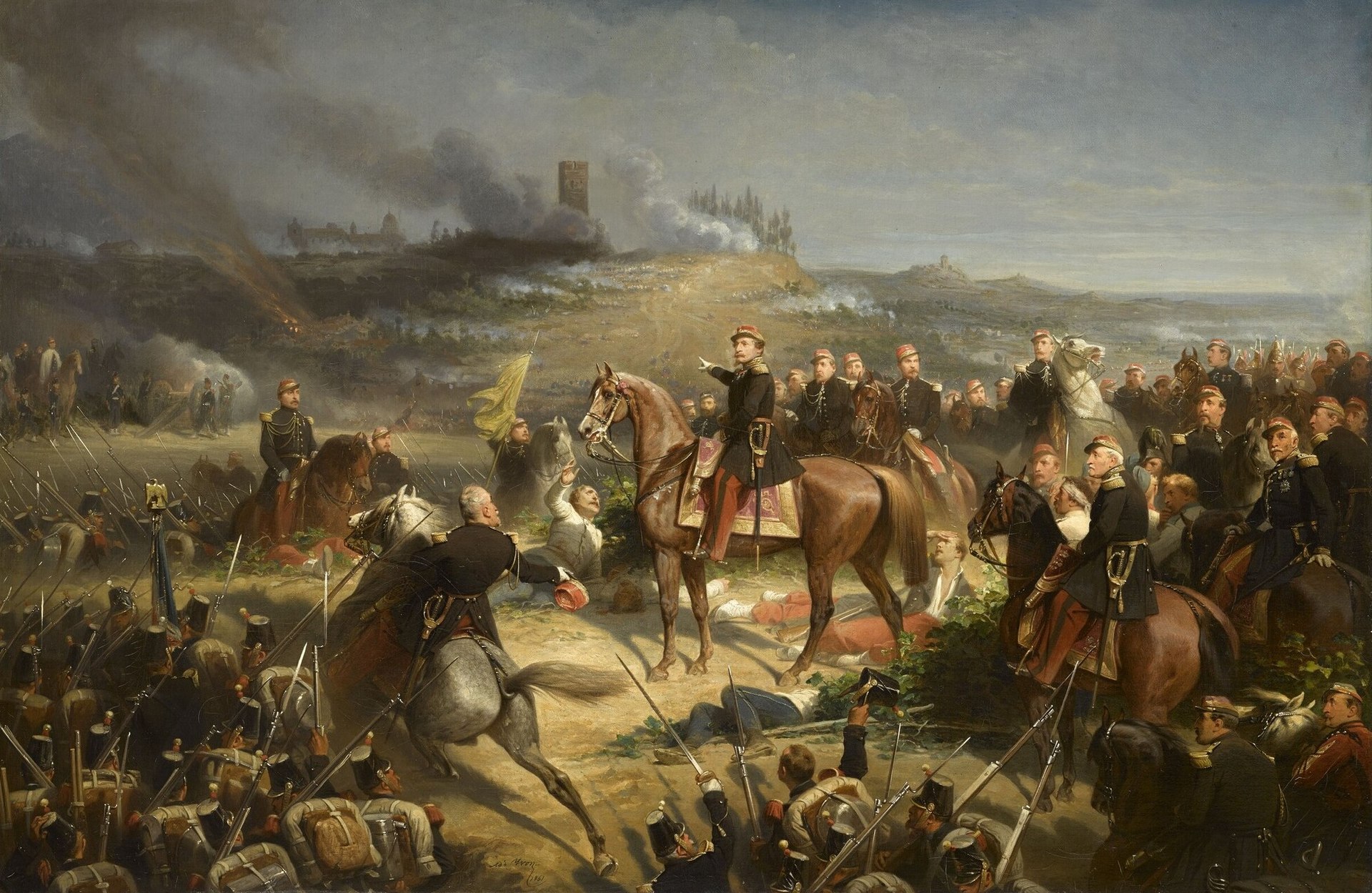
Napoleon III orders the Imperial Guard to attack at the Battle of Solferino(1859), Adolphe Yvon, 1861
- 2 - An inappropriate defensive instrument
Over time, what was a professional force became an army of old soldiers. Apart from those who had fought in the conquest of Algeria – which admittedly involved a particular kind of warfare – they were no more seasoned soldiers than they were specialists. The epithet “old” implies only that they had gained experience as soldiers, having spent many years in the army because they went on being enlisted again and again.>
Their training turned them into “soldier-machines”. Laudable attempts were made to improve the capabilities of future soldiers, but these impacted on only a minority of infantry units. Of course, all looked to the ideas of Guibert, on which the Règlement concernant l’exercice et les manœuvres (Rules governing exercises and manoeuvres) of 1791 was based, which in turn formed the basis for Instruction pour tous les grades (Training for all ranks) of 1794. Guibert saw discipline as a combination of autonomy – rather than sloppiness – and obedience – rather than blind subordination. But discipline and passive obedience became synonymous to the point where it became more important “to know how to march in line than to know how to fight”. In 1867, during the parliamentary debates about the Niel Law, Latour-Maubourg cautioned: “It is to be hoped that we might rid our army of these automatic movements, these complicated and difficult manoeuvres which are never performed before the enemy, and that it might be limited to teaching our troops the simple and straightforward movements, the rapid manoeuvres which are only performed in battle. Rapidity is one of the conditions of modern warfare.”
The rules – even when amendments were made to improve them – tended to focus on formality, and this went for the cavalry rules of 1829 and the infantry rules of 1831. This trend did not cease until the end of the Second Empire, and the new infantry rules of 1862, amended in 1867 then 1869, did not have time to take effect. As a matter of fact, neither the barracks “deserted” by the officers nor the training camps were suitable places for training. Although manoeuvres did take place annually at the Châlons camp from 1857, these were dazzling parades that left nothing to the initiative of the officers and men, who were reduced to the role of spear carriers.
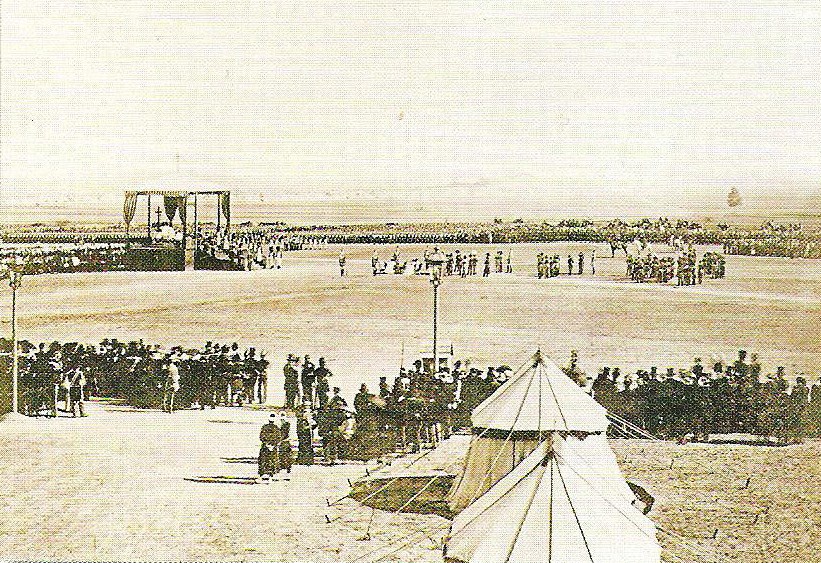
Châlons camp, Le Gray, 1857
Officer preparation also revealed failings. Most issued from the ranks, at least in the infantry – which was at the heart of the defensive system – until 1870, so that the campaigns of the Second Empire gave them an automatic advantage. Yet it would be simplistic to compare two types of officer – those who came out of the officer training schools having the technical background the others lacked – for their training, too, left something to be desired, at least that provided at Saint-Cyr. Even when it was of a high standard, as at the École Polytechnique or the École d’Application de l’Artillerie et du Génie, in Metz, it remained theoretical. The “Africans” who had fought in the conquest of Algeria, on the other hand, had experience on the ground, but this meant they tended to always view warfare in the light of their own experience.
In fact, the lack of preparedness was threefold: strategic, operational and tactical. Admittedly, while there may have been no more great military thinkers comparable to Guibert – the writings of Charles Ardant du Picq, who might have been his equal, were not published until after his death in battle, in August 1870 – strategic thinking did not come to a complete standstill. A handful of officers perceived the growing importance of speed in transport and communications, aspects which, with the industrial revolution, were behind the revival of the process of all-out industrialisation of warfare. But unconditional reverence of the achievements of Napoleon proved ossifying. And for the majority of officers, intellectual routine was the rule. From an operational perspective, the shortcomings were palpable. On the eve of war, there was still no coherent plan in place. The military command never became the intellectual vanguard which Gouvion Saint-Cyr, war minister under the Restoration, hoped it would. Officer training remained theory-based. There was no forward-looking vision and no coordination between the different combat arms or the different armed forces – army and navy. Finally, there formed a genuine tactical block linked to a distrust of giving soldiers too much autonomy. In the recurring debate about the superiority of shock or firepower, it was the former that prevailed; but in the revolutionary and Napoleonic era, the shock had been between “intelligent bayonets”, whereas henceforth it was between “rifle-toting machines”, for initiative and obedience in soldiers were deemed incompatible. Consequently, the developments made to weaponry in the 1850s, which enabled more rapid firing and gave renewed importance to firepower and soldier autonomy, were not incorporated until 1866, when the Chassepot rifle was introduced, proving superior to the Prussian Dreyse. Yet the tactical methods used by the “Africans”, primarily Bugeaud, were dismissive of military science and more suited to “coup de main” attacks by cavalry and special troops than to large-scale operations.
The French people and the duty of defence: a strained relationship
- 1. Between a desire for glory and an aspiration for peace
After the Battle of Königgrätz, the threat from Prussia became more urgent. The Emperor was determined to overhaul the defensive apparatus, if only in terms of numbers. Prussia was capable of deploying 730 000 men through the Landwehr, which meant it was able to instantly mobilise 356 000 men in the campaign against Austria. Meanwhile, France had 654 000 men but, without a genuine reserve, only the regular army – half that number – was operational. And since some of the troops were deployed overseas, it could only really count on 250 000 men. Napoleon III wanted a force of a million men – 600 000 regulars and reserves, plus 400 000 in a Garde Mobile which he hoped to set up. This meant calling on the French people to make a greater commitment to national defence. But their hearts and minds were no more ready than their bodies.
The Battle of Königgrätz (1866), attributed to Georg Bleibtreu, 1869. Deutsches Historisches Museum, Berlin
Public opinion wavered between pride in victories and a desire for peace. French people gloried in the former, as long as they came at no personal cost to them. This state of mind persisted even throughout the period in which the regime focused explicitly on military glory. It was true across all social classes and all regions, even the eastern border areas. The rise of Prussia and the outbreak of the Austro-Prussian War changed nothing, as the Lyon prosecutor admitted: “Among the middle class, discontent and surprise dominate. The century seemed set for the progress of civilisation, the peaceful conquests of industry, but instead the rule of law seems to have lost its empire! Shared interests have been brutally destroyed. All of a sudden, business solidarity is unheard of [...] The spectacle of warmongering despotism is distressing and really does set one thinking [...] These classes are thankful for peace and dream of industrial progress [...] The dominant interests are capitalist and commercial.”
Added to these material interests was the growing predominance of humanitarian feeling, as noted by other prosecutors.
- >2. A flawed conscription system
This ambivalence of the French people towards military affairs became clear when, after Königgrätz, Napoleon III undertook to reform the conscription system inherited from the Bourbon and Orléans monarchies
No regime in the 19th century, not even that of the Restoration, had considered returning to a professional army, which was bound up in French people’s minds with absolute monarchy. An army that put career soldiers and officers alongside civilians, called up temporarily to perform their civic duty but not destined to become professionals, was now the only kind of army worthy of being described as national – and effective. The link between defence and citizenship established at the time of the French Revolution appeared immutable, having been made sacred by revolutionary and imperial victories. But each regime hoped to fashion a conscription army. The question was how many men would comprise it and how long they would serve for. The Jourdan Law, on which the conscription system was then based, had introduced universal conscription, which in practice meant young people were required to enrol, in five age groups, but not necessarily perform the service in person.
In 1818, the authors of the Gouvion Saint-Cyr Law found themselves with two alternatives: use a lot system to recruit a small contingent to serve a long period or, for the same budget, call up a large number of conscripts, if not all, for a shorter period. The first option was chosen, for political reasons – to avoid recreating the large battalions that had bolstered the radical phase of the Revolution, then Napoleon’s personal power – and social reasons – to protect the sons of the elites from overcrowded barracks and the delays which a long-term military service would cause to their studies and careers. Furthermore, long-term service – six years from 1818, eight years in 1824, seven from 1832 – seemed necessary to foster an esprit de corps. Substitution for a fee became the corollary to the lot system and was what made it unequal.
Certificate from the deputy prefect of St Malo concerning the participation of a local resident in the lots drawn to form the class of 1865.
Source: Ille-et-Vilaine departmental archives
To remedy the way in which Napoleon had twisted the Jourdan Law, the authors of the 1818 law decided that the “winning” numbers would be completely released from their duty, with no retroactive call-up. Thus, 75% of conscripts under the Restoration, 70% under the July Monarchy and 65% under the Second Empire (55% during the campaigns) were given no military training and the reserve existed only on paper. Critics of the laws of 1818 and 1824 – and the Soult Law of 1832 in the same vein – denounced this mixed system of long-term service not only as unequal, but as demotivating. They deplored the fact that other States were more faithful to the original intentions of conscription, including Prussia with its Landwehr. Those disillusioned with the system – Republicans, Orleanists and Bonapartists up until 1848 – called for a closer link between citizenship and defence, with conscription in greater numbers, if not making it compulsory, by shortening its length to three or four years. They also denounced the market in men caused by the substitution system.
But their criticisms were in vain. The Second Republic was itself powerless to introduce a form of military service that went hand-in-hand with the advent of male universal suffrage. As a prisoner at Fort de Ham, Napoleon III had condemned the substitution system as a “white slave trade”. Yet once in power, and with practically all the power in his hands, he succeeded only in changing things marginally, by making the substitution system more “moral”, rather than getting rid of it, with the creation, in 1855, of an exemption which took the monopoly away from the substitution companies and gave it to the State.
In fact, for some French people, the blood tax was not quite civic duty, or citizens’ supreme right. And the substitution system was the best way to gain acceptance for the institution, all the more so since the long period of peacetime and the competition between companies made prices fall, so that substitution became accessible even to the more modest social classes. This acceptance of conscription was therefore nothing more than resignation to the status quo, a motive for refusing all change, even if it meant greater equality.
Napoleon III had this cruel experience throughout the process of drawing up the Niel Law. The crucial point of the bill, revealed in late August 1866, was the creation of a Garde Mobile, into which the “winning” numbers went, and could not be substituted. The undemanding service consisted of periodic exercises carried out in the capital of the department where the guard was stationed, rather than in barracks. But none now escaped their military duty, and the other novelty was the relative shortening of active service, from seven years to five. The bill caused an outcry over what public opinion saw as the “return of mass conscription”. “There are no longer any winning numbers” was the widespread complaint. A refusal movement was started – even in the east, the region most sensitive to the Prussian threat – by the privileged and the working classes, coupled with a campaign of petitions.
Cracks were to appear in the movement, but MPs were under pressure from universal suffrage, more palpable at this stage of liberalisation of the Second Empire. An unlikely alliance stood against the “militarism” of the regime: the liberal conservatives of Thiers, the only open advocate of the return to a professional army, and the republicans, who, disappointed at the modest pace of change towards compulsory military service, embarked on a game of political one-upmanship. The only ones in favour of the law were the authoritarian Bonapartists and, when the law was voted on 1 February 1868, it was devoid of any meaning. Substitution in the Garde Mobile was narrowly avoided, but the exercises were reduced to two weeks per year and, as the law was not enforced, even these were not carried out.
Émile Ollivier between the political parties, caricature of 1870 (Kladderadatsch, Germany), Allemagne)
The clash of 1870 would pit an armed nation – Prussia – against a nation with only one army – France. On 15 July 1870, Émile Ollivier, the de facto head of government since 2 January, proclaimed: “We declare this war light-heartedly.” This unfortunate and inappropriate phrase – by which he meant “without compunction” – was to put an end to his political career. But in actual fact, in its more common meaning, it summed up the state of mind of the French nation in the summer of 1870.


